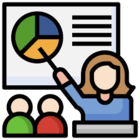Recent findings by the CheckPoint Incident Response Team (CPIRT) have unveiled a disconcerting cybersecurity incident. It sheds light on the activities of Camaro Dragon, a Chinese state-sponsored APT group also known as Mustang Panda and LuminousMoth.
WispRider-Malware Infiltrating Systems via USB Drives:-
A healthcare institution in Europe fell victim to a malware attack that penetrated its systems via an infected USB drive. This incident prompted CheckPoint Research (CPR) to conduct an extensive investigation, leading to the identification of newer malware variants. These malicious programs possess the alarming capability to self-propagate through USB drives, effectively turning these harmless devices into potent carriers of infection. This makes them capable of spreading malware far beyond their intended targets.
One of the malware variants, known as WispRider, emerged as the primary culprit behind the infection. Its creators have enhanced its capabilities, equipping it with backdoor functionality and the ability to propagate through USB drives using the HopperTick launcher. WispRider has also incorporated advanced features, such as a bypass mechanism for popular antivirus software in Southeast Asia and DLL side loading, which leverages components from security software and major gaming companies for evasion.
How Threat Modeling Can Mitigate These Risks:-
Threat actor’s exploitation of USB drives as an infection pathway underscores the pressing need for organizations to remain vigilant and take proactive steps to protect their assets.
Threat modeling is a crucial tool in mitigating the risks associated with malware spread through USB drives. It helps in the following ways :-
- Determining vulnerabilities: Through threat modeling, organizations can identify vulnerabilities in their systems related to USB drive usage. This includes improper handling, lack of device control policies, and inadequate endpoint security.
- Analyzing risk: Threat modeling helps assess the potential impact of infected USB drives on an organization's operations, data integrity, and reputation. This allows for risk prioritization and securing critical assets.
- Security measures: Organizations can implement security measures like device control policies, endpoint security solutions, and employee training to mitigate the risks associated with USB drive-based malware.
- Incident response planning: Threat modeling aids in developing incident response plans specific to USB drive-related incidents. This ensures swift detection, containment, and remediation.
By embracing threat modeling and taking proactive steps to address USB-related vulnerabilities, organizations can better safeguard their systems and data from the lurking dangers of malware transmission through seemingly harmless devices. It is imperative for organizations to remain vigilant and prioritize cybersecurity to defend against emerging threats in an increasingly interconnected world.
Elevate your cybersecurity game with ThreatModeler to harness the power of threat modeling to identify and mitigate risks associated with USB drives, ensuring a resilient system.



